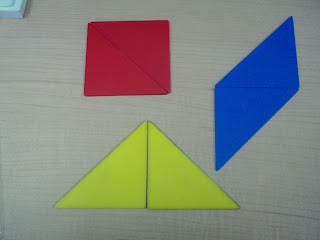 When I was 10 years old I did a project on flags. It was one of my many happy school experiences and ever since then I've always loved flags. Whenever I go to a different part of the world I always try to get a local flag. I visited Vermont a couple of summers ago and managed to track down and buy this wonderful Green Mountain Boys flag. One of the things I like about flags is that they are positively brimming with maths. For example, with the Green Mountain Boys flag, what is the ratio of length to width? What fraction of the flag is green?
When I was 10 years old I did a project on flags. It was one of my many happy school experiences and ever since then I've always loved flags. Whenever I go to a different part of the world I always try to get a local flag. I visited Vermont a couple of summers ago and managed to track down and buy this wonderful Green Mountain Boys flag. One of the things I like about flags is that they are positively brimming with maths. For example, with the Green Mountain Boys flag, what is the ratio of length to width? What fraction of the flag is green?I get the sense that my vexillophilia is something that is shared with a lot of students. We took advantage of this recently in a Grade 3/4 split class. We wanted to see what students knew (or didn't know) about fractions. In particular, we wanted to see what they knew about equivalent fractions.
 As a Minds On activity, we played this Flags Recognition Game (left) and we were quite impressed as to how well the kids did; between them they covered a lot of cultures and heritages and they were proud to share this.
As a Minds On activity, we played this Flags Recognition Game (left) and we were quite impressed as to how well the kids did; between them they covered a lot of cultures and heritages and they were proud to share this.We then followed this up with this Fraction Flags Game where we asked the kids how we could colour a flag according to some given fractions. For example, we asked them how we could colour a flag that is half gold, a quarter white and a quarter green. We could display these suggestions quickly on the interactive white board as shown below:
As the students explained their solutions we heard the beginnings of some ideas about equivalence: it was a perfect time to get them to design their own flags based on a 6 by 4 template similar to the flags above. This is the task we gave them:
Design a flag for this school or for your family. Explain what fraction of the flag each colour covers.
We gave them some guidelines as to what makes a good flag as shown below:The first misconception is that equivalent fractions are congruent. In other words, some students think that if two fraction pieces look different, then they cannot be equivalent. Looking at these flags, though, allowed us to challenge this notion:
In the example on the left, most students would agree that each colour covers a quarter but would be less sure about the example on the right. By comparing the area of each piece though we were able to challenge their misconception and get them to realise that equivalent fractions aren't necessarily congruent. After this student had completed his flag, we asked him to draw another with the colours covering the same fractions:
The second misconception is that fraction pieces have to be joined together. For example, some students would look at this flag...
...and not see that half of the flag is blue. They might say that two-quarters of the flag is blue but believe that it can only be a half if the two blue sections are together. This misconception prevents them from seeing equivalence.
This student (below) clearly explained how she could pick up one of the coloured pieces and 'match' it with a piece of the same colour and so each colour covers a quarter of the flag.
And this student is already comfortable with the idea of equivalence as seen in his answer:
So by the end, we certainly got students to realise that equivalent fractions don't necessarily look the same and that the fractions pieces don't have to be joined together. We would need to back up these ideas by considering fractions that are sets of abjects (and not just fractions as area as in these examples).
And just for the record, my favourite flag is the West Riding of Yorkshire Flag (below). What math questions can you see in it?














